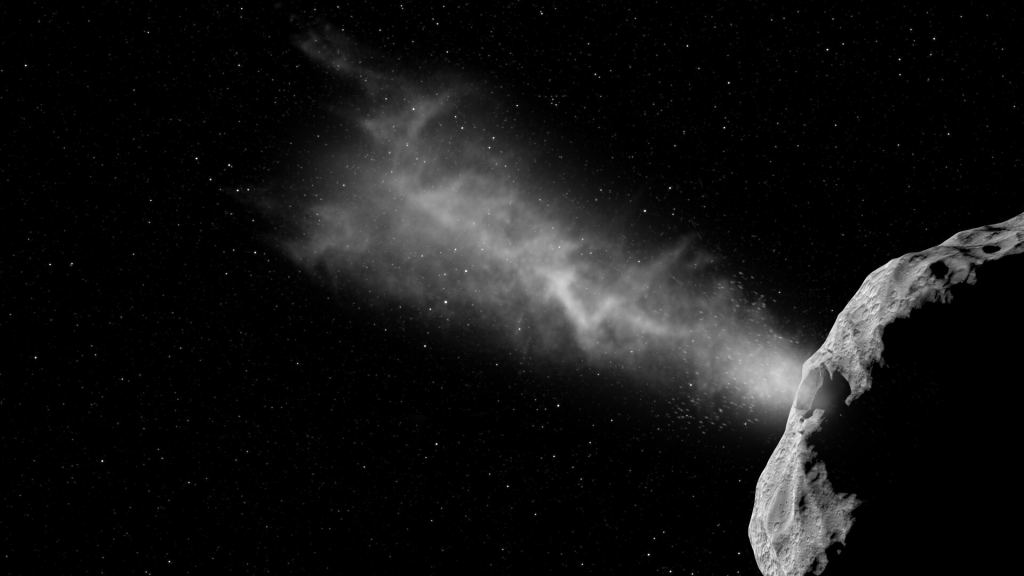On September 26th, NASA’s Double-Asteroid Redirect Test (DART) will rendezvous with the Near-Earth Asteroid (NEA) Didymos. By 23:14 UTC (06:14 PM EDT; 03: 14 PM PDT), this spacecraft will collide with the small moonlet orbiting the asteroid (Dimorphos) to test the “kinetic impactor” method of planetary defense. This method involves a spacecraft striking an asteroid to alter its orbit and divert it from a trajectory that would cause it to collide with Earth.
The event will be broadcast live worldwide and feature data streams from the DART during its final 12 hours before it strikes its target. At the time of impact, DART will be at a distance of 11 million km (6. 8 million mi) from Earth and traveling at a speed of 22,000 km/h (13,670 mph).
Striking Dimorphos will be no easy task, as the moonlet is only 140 to 200 meters (460 to 656 ft) wide, roughly the same size as the Pyramid of Giza. In fact, the DART mission will not be able to distinguish between Dimorphos and its parent body until the last hour before impact. The spacecraft will be relying on its autonomous guidance and navigation control systems at this point to maneuver itself into position for impact.
In the final hours before impact, DART will send a constant stream of images to ground stations on Earth, showing Dimorphos as it is slowly resolved into view. Tracking efforts are being ramped up in preparation using the ESA’s Estrack network and NASA’s Deep Space Network (DSN). The core Estrack network consists of four ESA stations located in Kourou (French Guiana), Kiruna (Norway), Redu (Belgium), Santa Maria (Portugal), and the three stations that make up the DSN – in Goldstone (California), Madrid (Spain), and Canberra (Australia).
The network is bolstered by 11 ground stations across the globe (the “Cooperative Network”) and five stations in remote areas of the world (the “Augmented Network”). The Estrack and DSN communicate with the DART mission for about an hour every day when it is visible to their antennae. The ESA’s Deep space antenna in Australia has also received monthly status reports from DART, providing updated details on its status, location, and commands, which are crucial for NASA’s mission control.
During the final 12 hours (and a few hours after), the ESA’s New Norcia Deep Space Antenna 1 (DSA 1) in Australia will provide a continuous stream of data and images. As ESA DART Service Manager Daniel Firre explained in a recent ESA press release: “It is vital for mission success that there are no gaps in coverage during DART’s terminal phase, and so antennas around the world will be working in unison, backing each other up and filling in any gaps in NASA’s Deep Space Network coverage – we cannot lose the link to DART for a moment. ” The station also completes a geographic triangle when paired with DSN antennas stationed in Canberra, Australia, and the Goldstone in California.
This allows mission controllers to track DART simultaneously from each location – known as the delta-Differential One-way Range (Delta-DOR) method – and provides extremely precise readings on its location, orientation, and velocity. Graphic showing the flight of the DART mission as it nears its objective, the double-asteroid system Didymos. Credit: ESA Suzy Jackson, the Maintenance & Operations Manager for the New Norcia ground station, explained: “Our giant dish in Australia will be in touch with DART as it crashes into Dimorphos.
In the last minutes, data will stream in from the DRACO instrument onboard. This data will be used by scientists to estimate the mass of the asteroid, surface type, and impact site. In addition, the data from DART will be used at NASA’s mission control to adjust mission parameters, and it’s really important the information arrives as close to real-time as possible.
” The impact will be witnessed by a CubeSat mission contributed by the Italian Space Agency (ASI), the Light Italian CubeSat for Imaging of Asteroids (LICIACube). This 14 kg (lbs) satellite will ride along with DART and detach 15 days before the impactor strikes Dimorphos to capture images of the impact and the resulting cloud of ejected matter. The ESA will also launch the Hera mission in October 2024 to rendezvous with the asteroid (by December 2026) to measure any changes in Dimorphos’ orbit, indicating if the DART mission was successful.
The Hera probe will also conduct an in-depth analysis of the impact crater, the mass of the parent asteroid, and other experiments to determine if the kinetic impact technique is effective. If all goes as planned, scientists will have validated a key strategy for protecting Earth from Potentially-Hazardous Asteroids (PHAs). Such methods are critical for ensuring that humanity and the countless other species that call Earth home can continue to live and thrive here for the foreseeable future.
The event will be hosted live by NASA TV starting at 12:00 PM EST (03:00 AM PST) and can be viewed on NASA’s website, Facebook, Twitter, and YouTube. The event will be live-broadcast by ESA Web TV concurrently, starting at 06:00 PM Central European Time (CET). For an added treat, here’s astrophysicist and Queen guitarist Brian May sharing the story and significance of the Hera mission, humanity’s first mission to study a double-asteroid: Further Reading: ESA The post The World’s Ground Stations are Getting Ready to Watch a Spacecraft Crash Into an Asteroid Next Week! appeared first on Universe Today.
.
From: universetoday
URL: https://www.universetoday.com/157714/the-worlds-ground-stations-are-getting-ready-to-watch-a-spacecraft-crash-into-an-asteroid-next-week/



